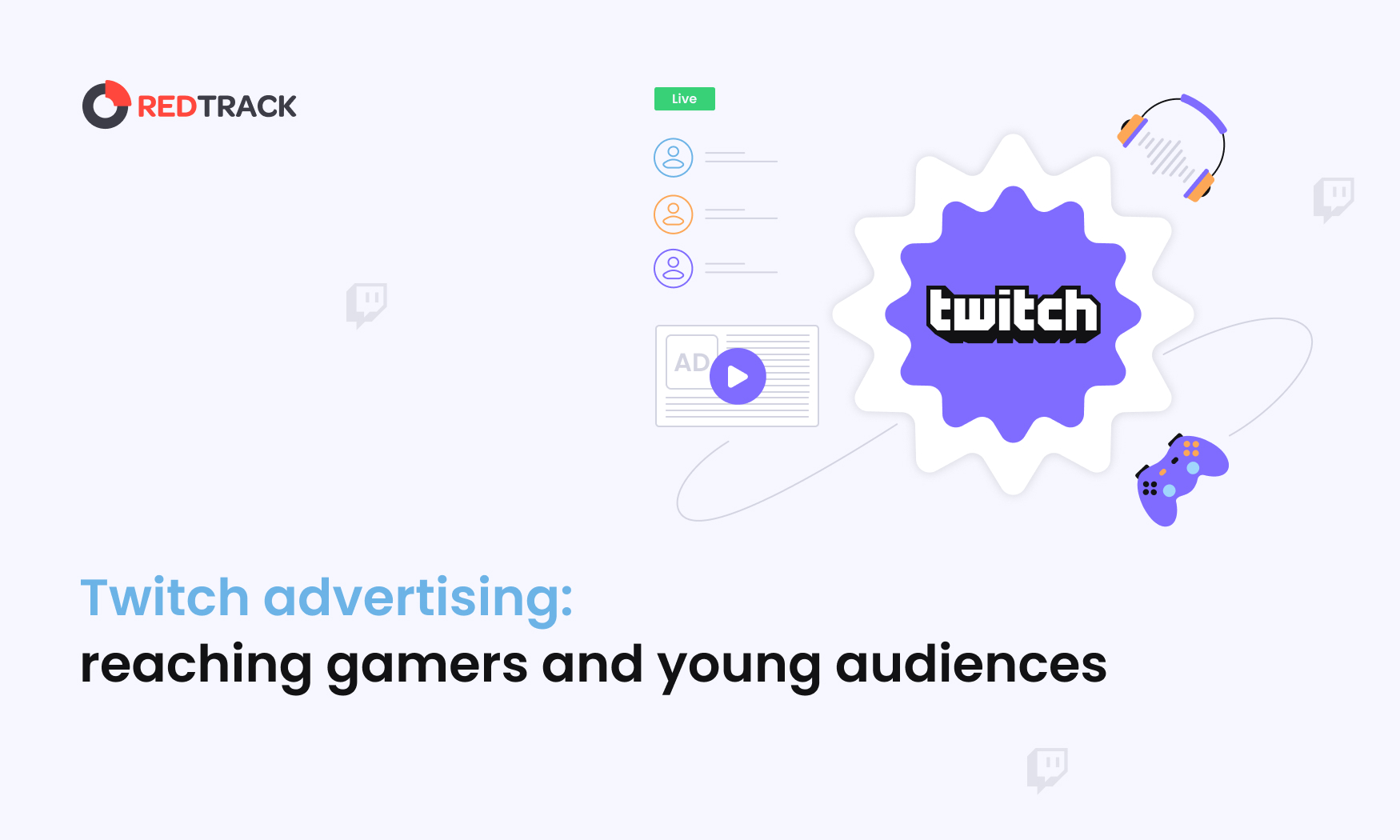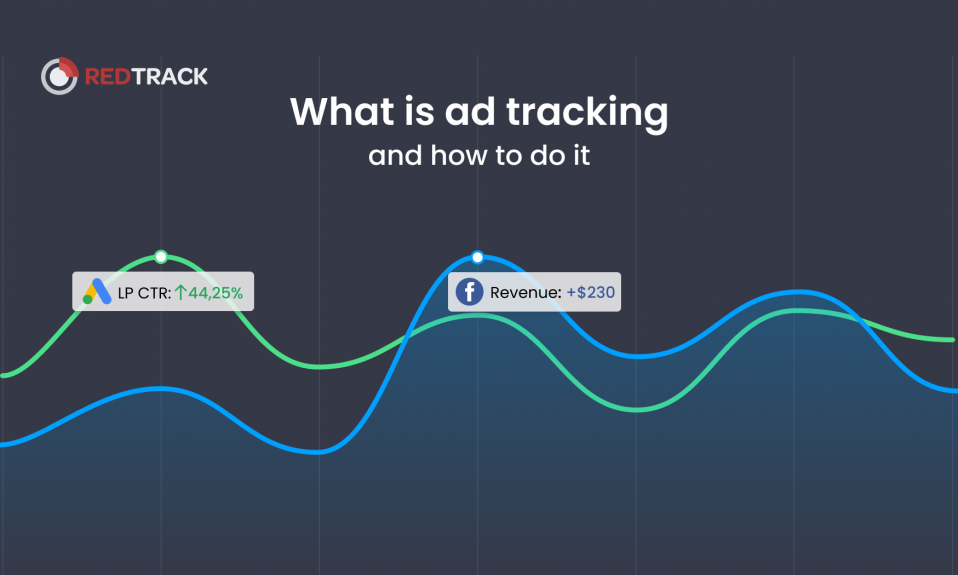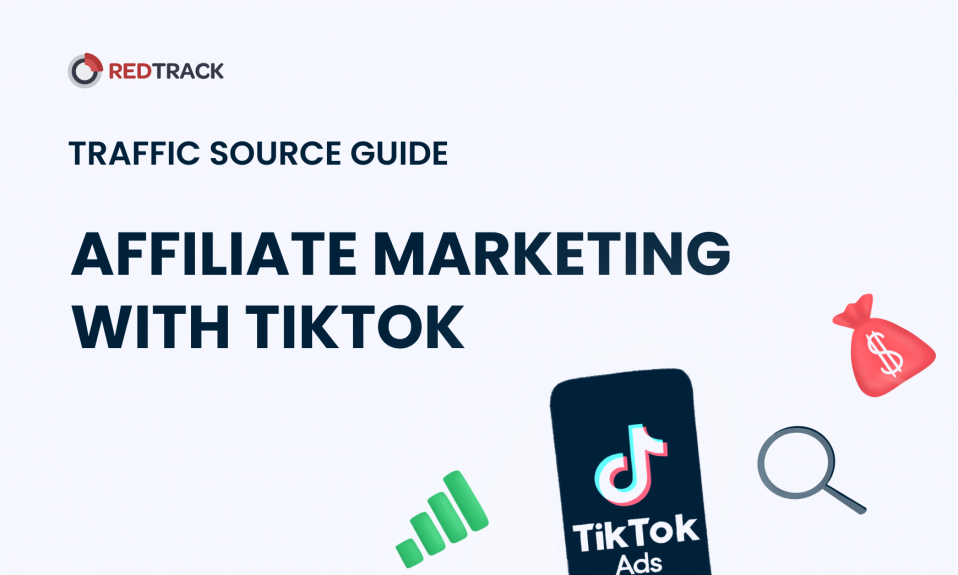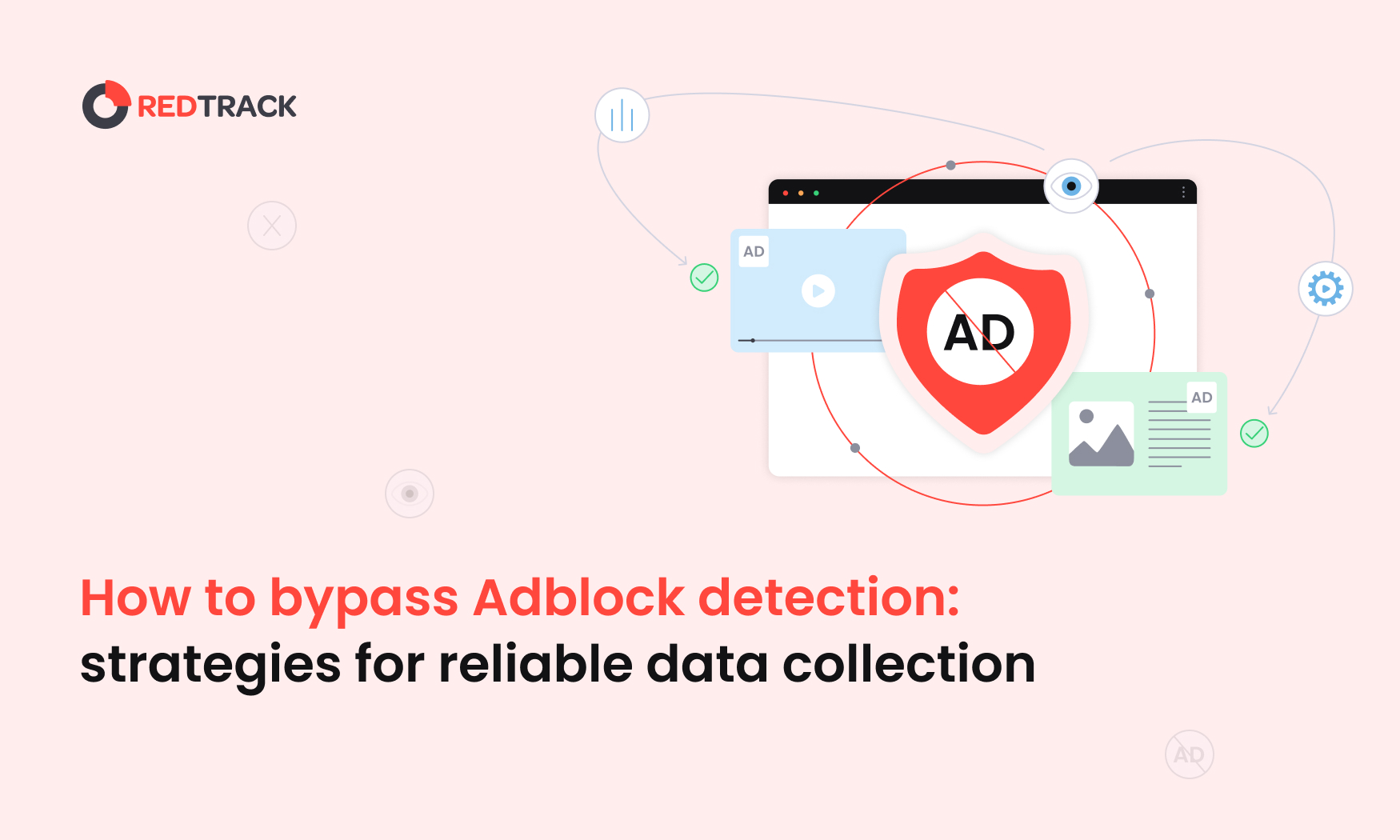
We’ve all been there, scrolling through our feeds or watching a video, only to be interrupted by those pesky ads. Annoying and distracting, right? This is specifically why many users look for ways to block ads and free themselves from these interruptions.
But for an advertiser, these ads are like seeds to a farmer (it’s why they do their job). Ad blockers can become a detrimental obstacle, stopping advertisers from reaching their audience, getting their message across, and accurately tracking data.
While ad blockers may help the crowd, they sometimes drive advertisers up the wall. They’ve got nothing left but to get creative and figure out how to bypass these blockers to reach the right people.
Yet, as frustrating as ad blockers are to advertisers, we have some tips on how to bypass ad blocker software and tools, dodge them, and abide by the required policies. It’s all about playing fair, agree?
What Do Ad Blockers Do?
You’ve most likely encountered a few annoying ads on websites, apps, or when watching videos. While you can get rid of them manually by exiting each one, there’s another less stressful solution: ad blockers.
Ad blockers help users enjoy ad-free scrolling by preventing ads, commercials, and other pop-ups from showing up on their screens. This allows for a better and smoother online experience.
How does an ad blocker work? Ad blockers often run as software or a browser extension blocking any communication between a user’s device and ad servers, obscuring the parts of websites meant to show ads. They primarily target scripts and trackers used for ads, hunting them down and using them to determine whether it’s an ad or not.
The ad blocker prevents any part of the website identified as advertising content from loading and showing up on the user’s end. And this is the reason why advertisers look for tricks on how to get around websites that block adblock.
How Do Ad Blockers Affect Advertisements?
While ad blockers aim to ensure a better online experience for users, they can cause many problems for marketers and those running ads. This is why many look for answers on how to get around sites that block adblock.
Blockers pose significant challenges for those who rely on these ads to attract potential customers and get their message across. Why? Well, they reach fewer people and have trouble tracking user behavior and data. Here are a few examples of how ad blockers negatively influence advertisements.
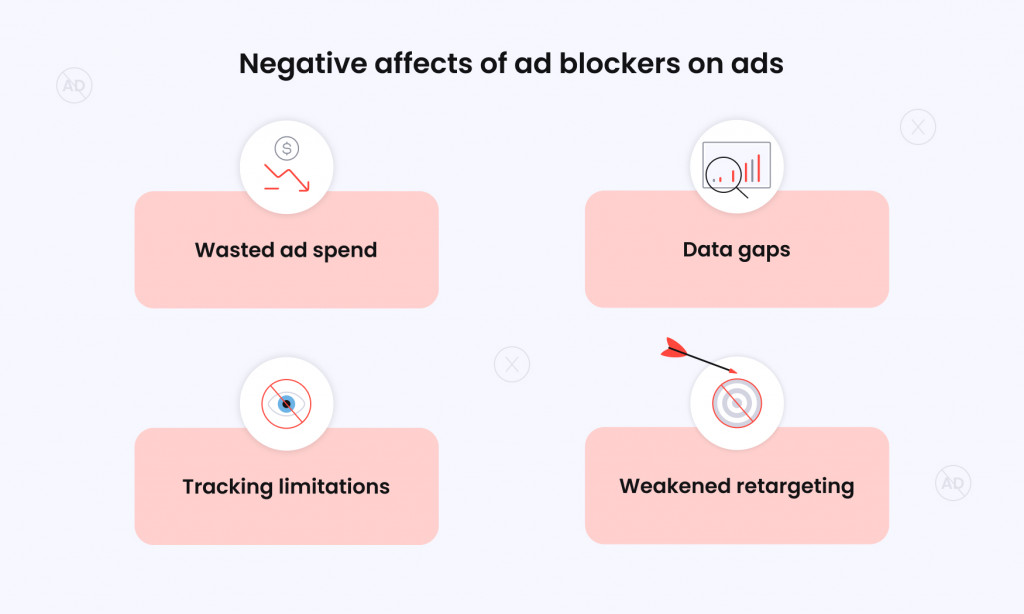
Waste of Resources
Paid ads cost money. Therefore, when ad spend goes down the drain, this isn’t exactly good news for those paying for them.
Various ad platforms often charge advertisers for a spot on their website based on impressions. So you’ll be billed regardless of whether the person looked at the ad, let alone clicked on it. Others, like Google, charge for blocked impressions, even if the ad was never displayed to the audience.
All of this could be a big waste of your marketing budget, and the financial impact may add up over time. Not to mention that this waters down your ad efforts and potential return on investment.
Data Gaps and Tracking Limitations
Ad blockers also interfere with data collection and tracking. The thing is that advertisers rely on lots of things when analyzing data. Sometimes on the loading of key scripts like analytics tags or some old-school methods like tracking pixels and third-party cookies.
Either way, ad blockers can compromise the quality of collected data in some of these methods, giving advertisers a hard time making decisions about their campaigns. Inaccurate data like incomplete customer profiles, skewed performance metrics, or an unprecise understanding of customer behavior means that you are basing your next moves on guesses.
How do you determine which campaign sticks and what needs improvement? Is the ad even effective? If you’re shooting in the dark and falling back on a picture with missing puzzle pieces, this data gap usually leads to poorer overall marketing performance and less informed decision-making.
Weakened Retargeting Strategies
Every advertiser knows that retargeting previous customers to interact once again with a product is a highly effective marketing strategy. After all, since that person is already familiar with your product, you don’t have to spend so much wooing them over as you would with a potential customer.
However, retargeting relies on behavioral data to bring people back to a brand’s website or advertisement after interacting with it. Since ad blockers prevent those kinds of cookies from interacting with a user’s device, it makes advertisers’ lives much more complicated.
As such, they’ll lose the ability to track the people who leave the platform without converting as a customer and the ability to provide relevant ads that help potential customers return and finish their purchases. This leads to a significant waste of money since companies could keep retargeting advertisements to unidentified users rather than concentrating on those most likely to convert.
How to Get Past Adblock Detection: 7 Strategies to Keep in Mind
Ad blockers are the thorn in every advertiser’s side. But just like any thorn, there are ways how to get past adblock detection that are safe, legal, and fair to the users. Here are a few solutions to circumvent ad-blocking software.
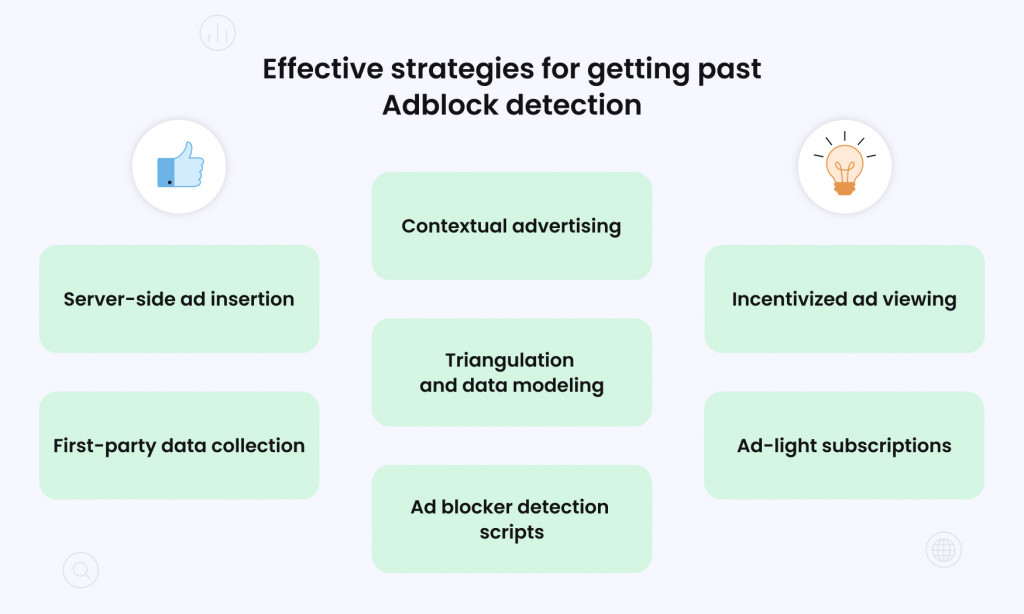
1. Server-Side Ad Insertion
One of the ways to bypass adblock detection is by using server-side ad insertions (SSAI) instead of relying on simple pop-ups and other traditional ways of promoting ads. SSAI circumvents ad-blocking software on the user’s device by embedding advertisements inside the content. For instance, many advertisers embed ads directly into the live stream instead of placing them in overlays or side pop-ups.
This way, it’s harder for an ad blocker to detect the ad and block it, users can still have a pleasant experience, and you won’t have to worry about ad blockers interfering with your ads. So, even if a user might have an adblocker installed, they are likelier to see the ads you posted. Nonetheless, SSAI isn’t a foolproof solution against all ad blockers.
2. First-Party Data Collection
Another adblock detection bypass idea is by doing first-party data collection. When you use this method, you target users via direct interactions, be they sign-ups, purchases, or something else. This way, you don’t use third-party trackers that ad blockers were created to block.
It’s a commonly applied sidestep solution to get around adblock detection that utilizes privacy-conscious marketing practices. Hence, it may be a long-term answer for successful marketing that fosters genuine trust and a privacy-friendly method of developing campaigns that honor your audience’s data preferences.
3. Contextual Advertising
This adblock blocker bypass method focuses on blending ads seamlessly with the content the user is engaged with. It has to be placed natively within the content so that it’s relevant to the content and not too obvious for the user or the ad blocker.
It also has to match the look and feel of the surrounding content so it isn’t intrusive, for instance, in the form of sponsored posts. Here, there’s no reliance on user data, making it safer and in line with any regulatory boards.
4. Triangulation and Data Modeling
Another way to bypass an ad blocker limiting direct tracking is through triangulation and data modeling. Here, the platform analyzes a user’s behavior, interests, and demographics without tracking them so that advertisers can predict which personalized ads would convert them into loyal customers.
To fill the gaps that ad blockers cause and get a better understanding of campaign effectiveness, triangulation uses various sources of data like multi-touch attribution. In this case, it examines the user’s journey to find out which touchpoints drive conversions.
5. Ad Blocker Detection Scripts
Mentioning another adblock detected bypass solution, you can use detection scripts to boost click-through dates, ad impressions, and effectiveness. These scripts are designed to determine if a user has activated ad blockers.
To work around it, the script suggests users alternative options for access, prompting them to disable their blocker of ads. Importantly, these requests that a user turns off their ad blockers should be nourished with some perk like access to valuable content.
6. Incentivized Ad Viewing and Consent-Based Ads
Ads can often feel overwhelming for users if they don’t gain anything in return. So, as a solution, some incentivize ad rewards, giving users rewards and benefits for every ad they watch. This method to bypass adblock detection is very popular among mobile users since users are more than willing to watch ads if you give them a reward, say, connected to the game they’re playing.
7. Ad-Light Experiences or Subscriptions
Finally, ad-light subscriptions are also an adblock detector bypass. Nowadays, lots of platforms are offering access to content with a reduced ad presence as a way to counter any ad fatigue that a user might experience. Some charge a fee as part of their membership model. Since the discretion is given entirely to the user, they won’t feel tricked or surprised by any ad fatigue they might experience.
Unlock Insights!
Subscribe to our newsletter for exclusive tips on ad tracking, affiliate marketing, and targeted advertising strategies.
How Does Server-Side Tracking Improve Data Collection Reliability?
Accurate data collection is crucial for advertisers to maximize marketing strategies. As a result, ad blockers, privacy laws, and browser limitations can pose serious problems for traditional ad tracking approaches.
One way of battling the traditional method of data collecting is by utilizing server-side tracking. As such, ad tracking software like RedTrack can help you take advantage of S2S tracking, letting you collect accurate data from multiple sources in real time.
In essence, server-side tracking gives advertisers more control over the data collection process. It ensures more reliable tracking results by processing data on the server. If you want to avoid potential disruptions from ad blockers, browser settings, and network issues, using server-side tracking to bypass ad blockers can be a great option.
Ultimately, it results in a more accurate and consistent capture of user behavior. However, there are plenty more advantages that server-side tracking can bring.
Better Cookie Management and First-Party Data Collection
With the introduction of privacy regulations like GDPR (General Data Protection Regulation) in Europe and CCPA (California Consumer Privacy Act) in the U.S., many internet browsers are not phasing out third-party cookies, which advertisers depend on in gathering data.
Through server-side tracking, instead of third-party cookies, you can use first-party cookies where the data is stored on the website itself, making the data more reliable since you’re coming from the source itself.
More Control Over Data and Privacy Compliance
With the government prioritizing privacy more than anything else, advertisers are now shifting to a new type of tracking that involves server-side trackers. It lets advertisers collect user data first, process it on their servers, and decide what to share with ad platforms.
In other words, advertisers can encrypt or anonymize data before transmission, guaranteeing that outside parties don’t get any personally identifying information (PII). Thus, it hits all three: lowering risks, increasing customer trust, and complying with privacy rules.
Bypassing Ad Blockers for Accurate Attribution
With ad blockers popping up daily, stopping cookies and tracking scripts from loading, life as an advertiser has never been more complex. Luckily, server-side tracking is a perfect answer to how to get around adblock detection.
Through this, advertisers can be assured of consistent conversion API tracking even if users have ad-blocking extensions and software available. There’s also a reduced lost attribution, which helps advertisers measure how well the campaign did.
Enhanced Data Accuracy and Reduction in Discrepancies
People have to learn how to bypass adblock detection because of the data discrepancies that often come from ad blockers. Yet, server-side tracking, say via RedTrack, collects first-hand data directly from the server, assigning a click ID for each click across multiple platforms such as Facebook, Good Ads, and even special TikTok events. This means that data is more accurate, leading to more reliable and valuable insights for better campaigns and enhanced marketing strategies.
Improved Decision-Making with Reliable Data
Every advertiser knows that having reliable data is key if you want your ad campaign to succeed. That’s why many advertisers prefer server-side tracking since it helps bring in more accurate and comprehensive data for better and more informed decisions.
So, tools like RedTrack that offer server-side tracking let advertisers experience better tracking and reporting features that also help them know which campaign is more successful, allowing them to spend their budget more wisely. Additionally, since advertisers can now see how customers interact with each product throughout the buying process, they can enhance each ad and make it more personalized and effective.
Concluding Thoughts on Adblock Detected Bypass
With trends changing daily, advertisers must keep up with everything to reach their target audience. However, ad blockers can be a pain.
While there are effective solutions for how to bypass ad blocker blockers, reliable and accurate data has to be in the spotlight if you want to make the most of your campaigns. Tools like RedTrack provide those handling ads with a tracking solution with spot-on data that can help regulate your ad spending, get insights on user behavior, and hit the ad targets more precisely.
If you want to take the solution for a spin and see how it works, feel free to check out the demo. This could be just what you need to harness your ad data, improve campaign performance, and maximize ad budget spend.




